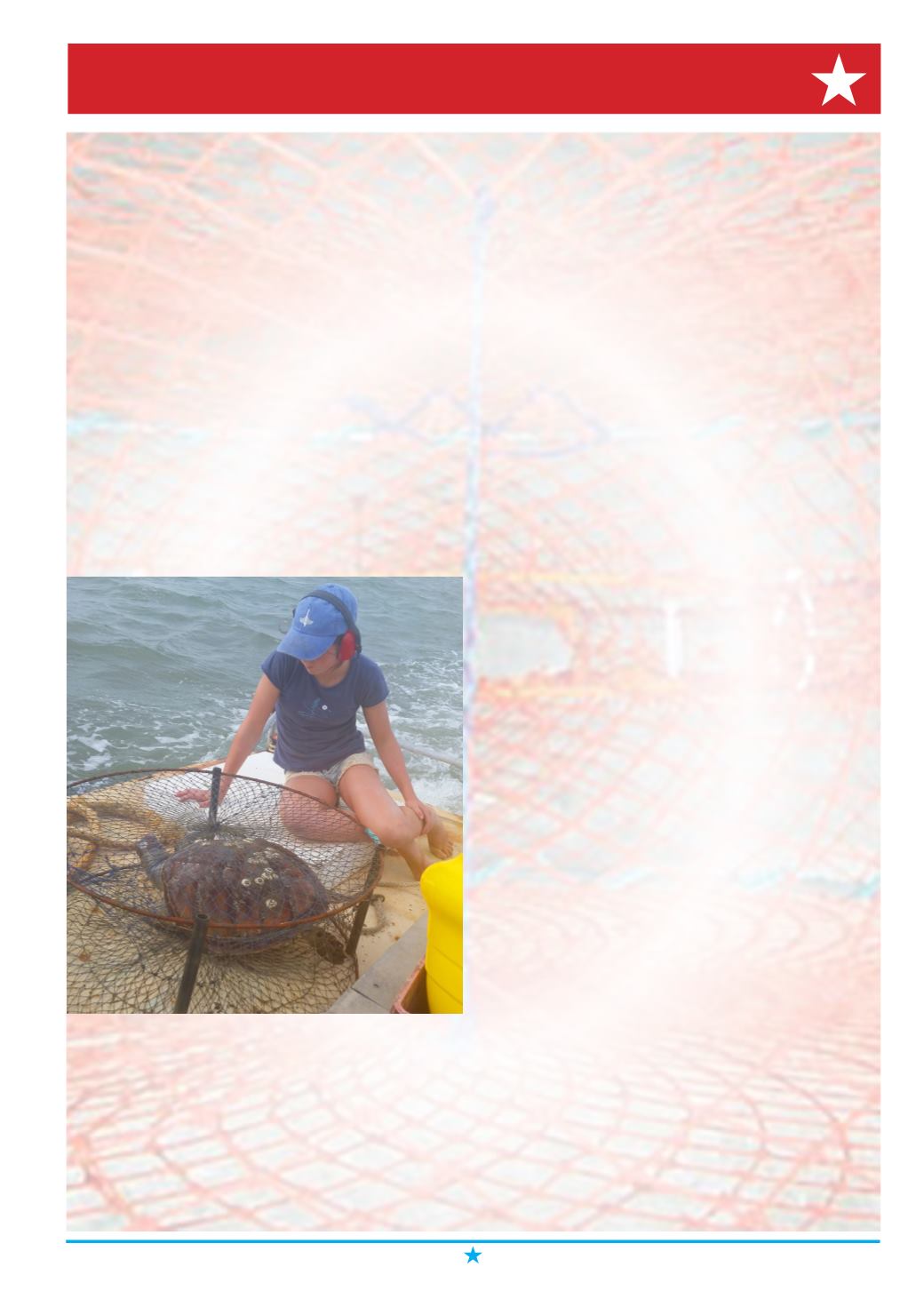

11
February 2016
eNews
Little Ship Club
(Queensland Squadron)
The perils of crabpots: it’s no choke!
Member Jenny Morley was moved to write this
thought-provoking piece following a harrowing
discovery over the Summer holidays.
It’s fair to say that the majority of our Members and
the recreational fishing community generally do the
right thing when it comes to fishing and crabbing in
Moreton Bay. They have regard to the other special
creatures with whom we share the waterways.
However, we thought it would be worth reminding
everyone of the legal requirements when it comes to
crabbing and ask that you take that extra special care
to look after and check your pots regularly.
Crabpots can easily be lost, become ‘ghost fishers’
and can trap other unintended catches, including
turtles.
Our daughter, on one of her excursions with the
work crew during the school holidays, was extremely
saddened to find a turtle that had been trapped in a
pot, drowned and was found floating on the surface.
We are so very lucky to be part of a Club that has
Moreton Bay Marine Park as its ‘front yard’ with six
of the world’s seven turtle species – the leatherback
turtle, the loggerhead turtle, the flatback turtle, the
Pacific ridley turtle, the green turtle and the hawks-
bill turtle.
Moreton Bay Marine Park also has one of the most
important feeding areas for loggerhead turtles along
the east coast of Australia.
Loggerhead turtles are listed as endangered under
the
Nature Conservation Act 1992
.
Loggerheads eat the shellfish, crabs, sea urchins and
jellyfish that live in the seagrass, thus they could be
trying to steal your crabs, so ideally your crabpots
will have a vertical cord in front of the pot entrance
that will help to deter turtles. If yours doesn’t have
one, it’s easy to fashion your own, and make sure you
consider this if you’re buying a new pot.
The legal requirements are set out as follows:
•
Surface floats should be a light colour and robust
(e.g. solid polystyrene or similar).
•
Floats must measure 15cm in all dimensions.
•
Recreational fishers must mark crabpot floats
with the owner’s surname.
•
All crab apparatus must be attached by a rope to
either a float or a fixed object (e.g. a jetty or tree)
above the high water mark. The rope must have a
tag with the owner’s surname on it at the point of
attachment to the fixed object. Crabpots must also
have a tag showing the name and address of the
owner.
•
Fishers should also make sure that crabpots are
in a sufficient depth of water at all stages of the tide
(so that marine animals are not exposed to the sun
etc, and unwanted crabs can be released alive).
•
In tidal waters, no more than four crab pots or
dillies (or a combination of pots and dillies) may be
used per person.
And don’t forget that mudcrabs have a size limit of
15cm, and a possession limit of 10.
So other than the legal requirements, which have
been put in place to try to minimise the damage to
marine wildlife, it’s also worth thinking about the
impact of crabpots on our fellow boaties.
Crabpots with dark floats are not only illegal,
they can easily be missed by unsuspecting boaties,
especially when left in (or allowed to drift into)
a fairway, and the rope can easily catch on a shaft.
If you have ever experienced this, it can be a very
expensive exercise. It seems axiomatic (a polite
way of saying ‘the bleeding obvious’!) that crabbers
should avoid placing pots in or near a navigation
channel, as sometimes they cannot be avoided,
even if they are visible.
With a little care and attention, we can all share in
the wonders of the Bay!


















